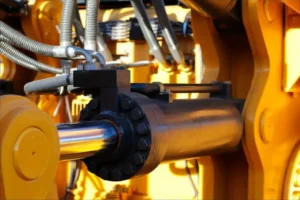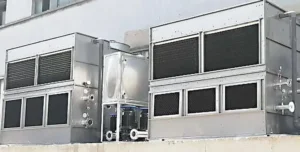Luyện đồng liên quan đến việc khai thác đồng từ quặng của nó, chủ yếu thông qua hai phương pháp: luyện kim hỏa Và thủy luyện kim.
Luyện kim hỏa: Phương pháp luyện đồng chiếm ưu thế
Luyện kim lửa vẫn là phương pháp được sử dụng rộng rãi nhất để nấu chảy đồng, đặc biệt là để xử lý quặng sunfua. Quá trình này bao gồm nhiệt độ cao để tách đồng từ quặng của nó, với một số bước chính để đảm bảo thu hồi kim loại hiệu quả:
1. Xử lý quặng và tuyển nổi
Bước đầu tiên trong luyện kim là xử lý quặng, liên quan đến việc tách các khoáng sản có giá trị từ chất thải trong quặng. Các phương pháp tách vật lý như tách trọng lực và tách từ thường được sử dụng, nhưng tuyển nổi là quan trọng nhất. Trong tuyển nổi, quặng đồng được trộn với nước và hóa chất, làm cho các hạt quặng đồng dính vào bong bóng. Những bong bóng này nổi lên trên bề mặt, tạo bọt, và quặng đồng được tách ra khỏi các khoáng sản khác, improving the efficiency of subsequent processes.
2. Calcination (Roasting)
The flotation concentrates are then subjected to calcination or roasting, where they are heated to remove impurities such as sulfur and oxygen. This step converts sulfide copper ores into oxidized copper ore and helps volatilize or decompose unwanted elements. There are two types of roasting:
- Semi-oxidative roasting is used when the sulfur content is low.
- Fully oxidative roasting is employed for concentrates with higher sulfur content, to ensure thorough oxidation before further processing.
3. Smelting
Smelting is the core of copper extraction, where the roasted ore undergoes further chemical reactions at high temperatures. The goal is to separate copper from iron and gangue, producing a copper-rich matte. The two main smelting processes are:
- Flash Smelting: In this method, finely dried concentrate is injected into a reaction furnace, where it is exposed to oxygen-rich air. The concentrate undergoes rapid smelting, and the resulting molten products (matte and slag) are separated in a settling tank. This method is highly efficient, producing both copper matte and sulfur dioxide gas, which can be further processed for sulfur recovery.
- Bath Smelting: In this method, oxygen-rich air is blown into a molten bath of matte and slag, with the concentrate added. The bath is vigorously stirred, ensuring complete smelting. Furnace types for bath smelting include horizontal, vertical, rotary, and fixed furnaces. The type of blow used—side, top, or bottom—affects the efficiency and characteristics of the smelting process.
4. Blowing
After smelting, the next step is blowing, which helps further refine the copper by oxidizing and removing impurities such as sulfur and iron. This process is typically done in P-S converters, but newer technologies like continuous refining Và flash refining are also becoming more common.
5. Refining
Refining further purifies copper, and there are two primary methods used:
- Pyrometallurgical Refining: This process exploits the differences in the affinity of various impurities for oxygen. Impurities are removed via oxidation, slagging, or volatilization.
- Electrolytic Refining: This method involves electrolysis to remove any remaining impurities, yielding high-purity copper (cathode copper) with a purity of up to 99.99%. Electrolytic refining is the most widely used technique for producing refined copper.
Hydrometallurgy: A More Environmentally Friendly Option
Thủy luyện là một phương pháp hiệu quả khác để nấu chảy đồng, đặc biệt đối với quặng cấp thấp Và quặng đồng bị oxy hóa. Kỹ thuật này dựa vào phản ứng hóa học chứ không phải nhiệt độ cao để tách đồng từ quặng, cung cấp một số lợi thế về môi trường, mặc dù nhìn chung nó kém hiệu quả hơn so với luyện kim hỏa.
1. nghiền quặng
Bước đầu tiên trong thủy luyện kim là nghiền và nghiền quặng, tăng diện tích bề mặt và cho phép tương tác tốt hơn với dung dịch lọc. Bước này rất quan trọng để nâng cao hiệu quả của quá trình lọc tiếp theo..
2. Xử lý rửa trôi
Quặng nghiền sau đó được đưa vào sự rửa trôi sự đối đãi, ở đó nó được trộn với dung môi thích hợp—thường là dung dịch axit sulfuric loãng. Axit sulfuric hòa tan khoáng chất đồng trong quặng, tạo thành đồng sunfat trong dung dịch. This step can be done in heap leaching, agitated leaching, or tank leaching, depending on the ore characteristics.
3. Filtration Separation
After leaching, the leachate (the solution containing dissolved copper) is separated from the solid waste (residue) by filtration. This step ensures that the dissolved copper is ready for the next stage of extraction.
4. Extraction and Purification
Copper ions are extracted from the leachate using an extractant. The extracted copper is then further purified to remove any remaining impurities. This purification step can involve solvent extraction, where a chemical agent selectively bonds with the copper ions, or precipitation methods using reducing agents.
5. Điện phân or Replacement
Finally, the copper ions are reduced to metallic copper through either electrolysis or replacement processes:
- In electrolysis, các ion đồng bị khử ở catốt tạo thành kim loại đồng nguyên chất, được thu thập và xử lý thành đồng cathode.
- thay thế liên quan đến việc sử dụng một kim loại hoạt động mạnh hơn, chẳng hạn như sắt, đẩy đồng ra khỏi dung dịch, kết tủa đồng ở dạng rắn.
Phần kết luận
Trong khi luyện kim hỏa hiệu quả hơn và được sử dụng rộng rãi cho quặng đồng cao cấp và quặng đồng sunfua, thủy luyện kim cung cấp một giải pháp thay thế thân thiện với môi trường hơn cho quặng cấp thấp hoặc bị oxy hóa.







